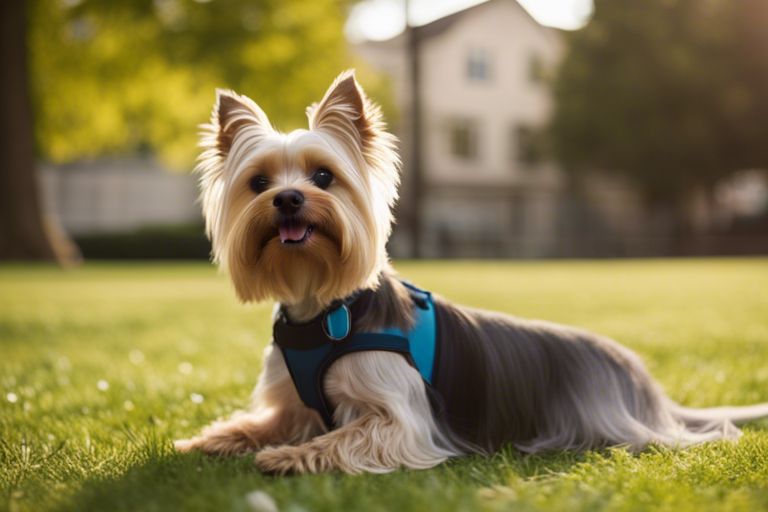There’s no denying that training a small dog like a Yorkshire Terrier or Maltese comes with its own set of challenges. From potty training to teaching them basic commands, it takes patience, consistency, and a tailored approach to bring out the best in these intelligent and independent breeds. In this blog post, we will probe into effective tips and tricks to help you master canine obedience and build a strong bond with your pint-sized companion. By understanding their unique personalities and learning how to communicate effectively, you can set your Yorkshire Terrier or Maltese up for success in obedience training.

Key Takeaways:
- Consistency is key: Dogs, especially Yorkshire Terriers or Maltese, respond well to consistent training routines. It’s important to set clear rules and expectations and stick to them to avoid confusion.
- Positive reinforcement works best: Use treats, praise, and rewards to encourage good behavior during obedience training. Punishment can lead to fear and anxiety in your dog, making training less effective.
- Start training early: Begin training your Yorkshire Terrier or Maltese as soon as possible to establish good habits and behaviors. Early training can help prevent common issues like barking, chewing, and aggression.
Getting Started with Training
Establishing the Training Environment
On your journey to mastering canine obedience with your Yorkshire Terrier or Maltese, setting up the right training environment is crucial. Ensure you have a quiet and distraction-free space where you can focus solely on training your furry companion. Remove any potential hazards and have plenty of treats on hand to reward good behavior.
Choosing the Right Training Equipment
To effectively train your Yorkshire Terrier or Maltese, selecting the right training equipment is imperative. Invest in a comfortable and secure collar and leash for control during walks and training sessions. Additionally, consider purchasing a variety of treats and toys to keep your pup engaged and motivated during training.
Another important piece of training equipment to consider is a clicker. Clicker training can be a useful tool in reinforcing positive behaviors in your small breed dog. By associating the click with a treat, you can quickly communicate to your furry friend when they have done something right, making the training process more efficient.
Core Training Principles
Positive Reinforcement Techniques
The key to training your Yorkshire Terrier or Maltese effectively is through positive reinforcement techniques. This means rewarding good behavior with treats, praise, or toys to encourage your dog to repeat the desired actions. When your dog associates a specific behavior with a positive outcome, they are more likely to perform that behavior again in the future.
Consistency and Patience in Training
Consistency and patience are important when it comes to training your Yorkshire Terrier or Maltese. Dogs thrive on routine, so it’s crucial to establish consistent rules and expectations during training sessions. Remember that learning takes time, and some dogs may pick up commands quicker than others. Be patient and persistent, and don’t get discouraged if progress is slow. With time and practice, your dog will eventually master obedience commands.
Core to the success of every training session is your commitment to consistency and patience. Dogs respond best to clear instructions and predictable routines. Remain steadfast in your approach, and avoid changing the rules or expectations mid-training. By staying patient and consistent, you set your dog up for success and establish a strong foundation for their obedience training.
Advanced Training Strategies
- Addressing Common Behavioral Issues
Addressing Common Behavioral Issues
For many Yorkshire Terrier and Maltese owners, common behavioral issues like barking, digging, or separation anxiety can be challenging. To address these problems, it is important to understand the root cause of the behavior and provide consistent training and positive reinforcement. Whether it’s implementing desensitization techniques or seeking professional help, consistency is key in modifying unwanted behaviors and fostering a well-behaved dog.
- Teaching Complex Commands
Teaching Complex Commands
Advanced training for Yorkshire Terriers and Maltese dogs can include teaching complex commands like “roll over,” “play dead,” or even agility exercises. To successfully teach these commands, a solid foundation of basic obedience training is necessary. Start by breaking down the command into smaller steps, use positive reinforcement, and practice regularly in short sessions to keep your dog engaged and motivated. Advanced training sessions should be fun and rewarding for both you and your furry companion.
Plus, teaching complex commands can enhance your bond with your dog and provide mental stimulation, which is crucial for these intelligent breeds. Remember to be patient and consistent throughout the training process, and always end on a positive note to keep your Yorkshire Terrier or Maltese motivated to learn and please their owner.
Maintaining Obedience
Daily Practice and Reinforcement
Not just reserved for initial training, daily practice and reinforcement are imperative to maintaining obedience in your Yorkshire Terrier or Maltese. Regular training sessions, even if brief, can help prevent regression in behavior and keep your furry friend sharp and responsive to commands.
Socialization and Adaptability
Any successful training regimen for Yorkshire Terriers and Maltese must include a focus on socialization and adaptability. Exposing your dog to various environments, people, and other animals from a young age is crucial for their development and helps them become well-rounded and balanced companions. It also helps prevent behavior problems such as fearfulness or aggression towards unfamiliar situations.
One important aspect of socialization and adaptability is exposing your dog to different sounds, sights, and experiences. This can include taking them on car rides, visiting new places, or introducing them to new people and pets. By ensuring your Yorkshire Terrier or Maltese is comfortable and confident in various scenarios, you can help foster a well-adjusted and obedient pet.
Maintaining Engagement and Consistency
Consistency is key when it comes to maintaining obedience in your Yorkshire Terrier or Maltese. Always use the same commands and cues, and ensure that all family members are on the same page with training techniques. Additionally, keeping training sessions fun and engaging helps keep your dog interested and eager to learn. Bear in mind, patience and positive reinforcement are imperative tools in your arsenal for a well-behaved pup.
To wrap up
As a reminder, mastering canine obedience is a rewarding journey that requires patience, consistency, and positive reinforcement. By following the tips and tricks provided in this guide, you can effectively train your Yorkshire Terrier or Maltese to become a well-behaved and obedient companion. Remember to always stay calm, be firm but gentle, and most importantly, have fun bonding with your furry friend through training sessions. With dedication and the right approach, you can establish a strong bond with your dog while teaching them necessary obedience skills. Stay committed to the process, and soon you will see the fruits of your hard work reflected in your dog’s behavior.
FAQ
Q: Why is obedience training important for Yorkshire Terriers and Maltese dogs?
A: Obedience training is crucial for Yorkshire Terriers and Maltese dogs to ensure they are well-behaved, obedient, and safe in various situations. It helps strengthen the bond between the owner and the dog, establishes boundaries, and prevents unwanted behaviors such as excessive barking, jumping, and aggression.
Q: What are some effective tips for training Yorkshire Terriers and Maltese dogs?
A: Consistency is key when training Yorkshire Terriers and Maltese dogs. Use positive reinforcement methods such as treats, praise, and rewards to encourage desired behaviors. Keep training sessions short and fun to maintain the dog’s attention and interest. Establish a routine and rules to create a structured environment for your pet.
Q: How can I address specific behavioral issues during obedience training?
A: Identify the root cause of the behavioral issue before addressing it during obedience training. For example, if your dog is exhibiting separation anxiety, gradually desensitize them to your leaving by practicing short departures. Seek professional help if needed, such as hiring a certified dog trainer or behaviorist to provide guidance and support.

